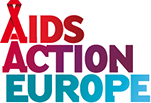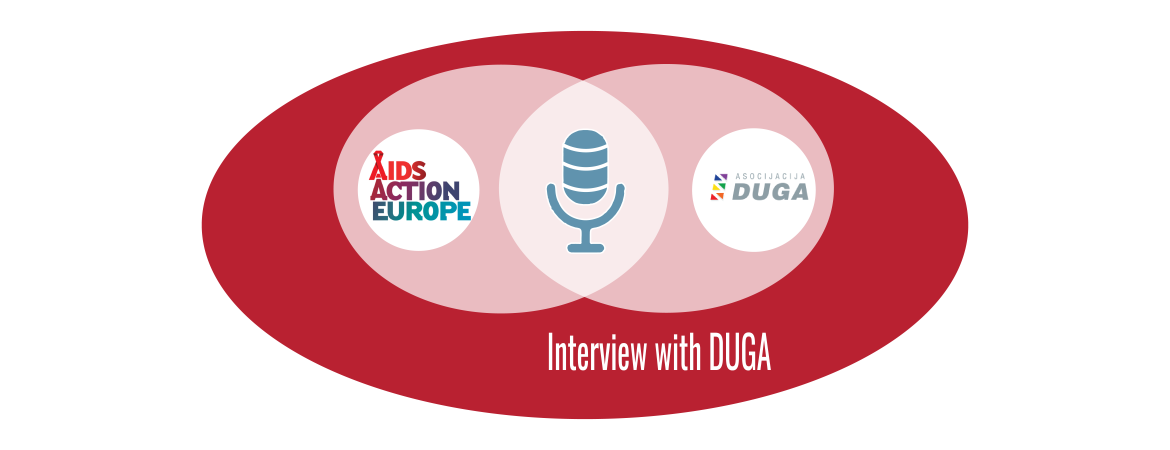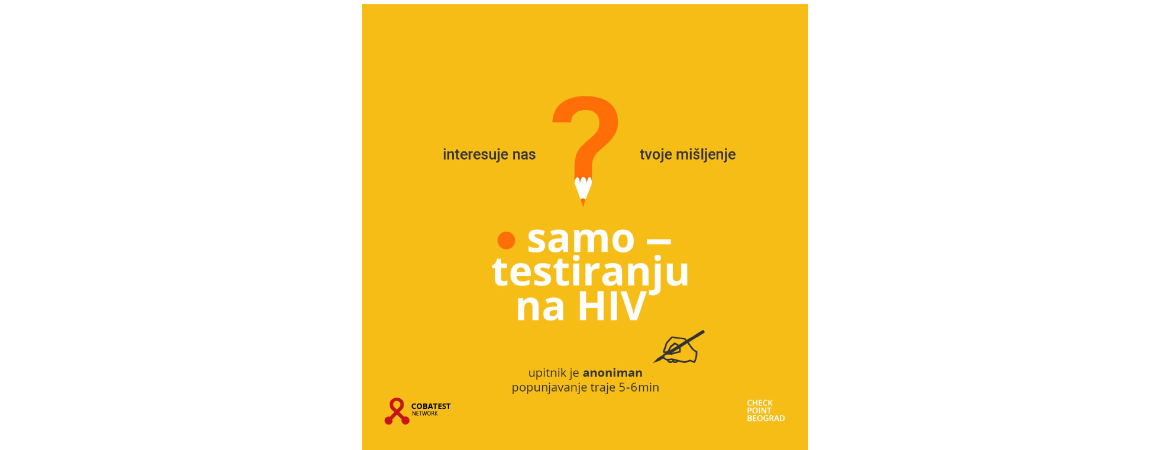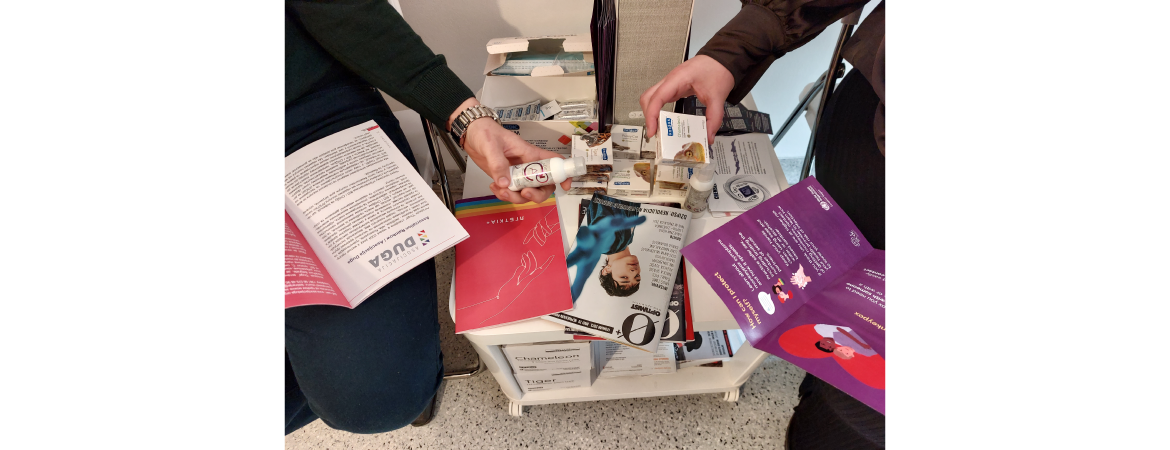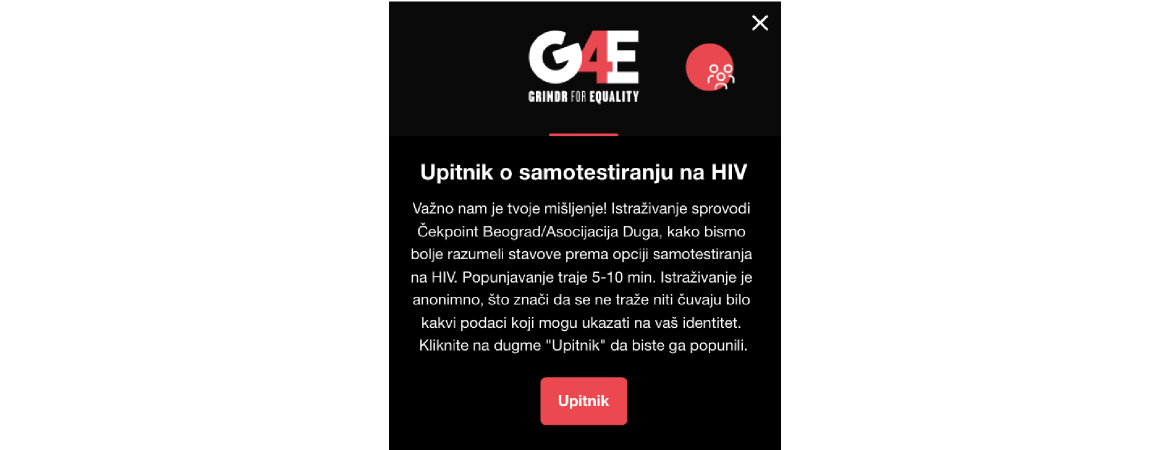Community-based and community-led testing services are crucial in the HIV/AIDS, viral hepatitis, and sexually transmitted infections response, particularly in reaching populations where diagnosis and linkage to care are lower than the national average. However, providing these services can be challenging, especially in environments that may be hostile towards community-based and -led service delivery, and where policy and legal barriers exist.
In 2022-2023, the COBATEST Network supported six member organizations in countries where the environment is particularly challenging for community-based and community-led service delivery. In the following interview with Asocijacija DUGA, one of the 6 organisation supported, we asked the organisation to tell us about their work, the challenges they face, and how they are working to improve community-based testing services for HIV/AIDS, viral hepatitis, and sexually transmitted infections in their communities.
Your project focuses mainly on GBTMSM. Could you tell us more about the role that CBVCT plays in reaching this community in Serbia?
CBVCT centers have a crucial role in reaching of GBTMSM population in Serbia. This is mainly due to the fact that the population is still significantly stigmatized and discriminated. This is also noticeable within the system of public health institutions. The most of the VCCT centers exist only in bigger cities, and even not all of them have sufficiently sensitized staff in order to properly approach and address the needs of the community. Therefore, majority of the target population rather chooses CBVCT as a place they would like to get the information, counseling and testing services.
Nowadays, as we are faced with the greater influx of the clients coming from the migrant population, CBVCT approach becomes even more important. No matter if they come from migrant, refugee or asylum seeker community, and belong to the GBTMSM population (which make significant share), they usually find information through the community based organizations and their social networks, as they are more accessible, so we are usually the first they approach to ask for services. Many of migrants belong to the population of PLHIV, and we were able to ensure they get linkage to care as well as to regulate their health insurance status, in order to continue using therapy in Serbia, which would be very difficult to achieve without support of CBVCT organizations.
What is the status of CBVCTs in Serbia and how does it affect your work?
The status of CBVCT in Serbia is not fully regulated yet. In practice, the Ministry of Health (MoH) do support our activities, as they are partially funded by The Global Fund grants that MoH receives in order to fund the CBVCT activities. In order to be able to provide services, CBVCTs have to have Cooperation Agreements signed with the respective public health institutions and to employ lab technicians that come from the public health care system (the ones that already work in a health institution). This is a challenge to our work because, for instance, we cannot engage a full time lab technician, or, we are not allowed to issue a paper copy of a test result to our clients, because only institutions can.
Is there access to self-testing and how popular is it?
There is no access to self-testing (ST) in Serbia, currently.
What do you plan to achieve with your project?
The main goal of this project is to raise awareness regarding importance of testing and early discovery of HIV infection, provision of information on free CBVCT services, and to increase number of tested for HIV in key populations such as GBTMSM, as well as among migrants and refugees.
One of our objectives is to investigate the attitudes of GBTMSM (gay, bisexual, trans, and men who have sex with men) population in Serbia towards HIV self-testing. Serbia currently does not have HIV self-testing options, and for this purpose, through the project, we are conducting a survey in the form of an online questionnaire that is being administered to the GBTMSM population in Serbia in order to better understand their view of potential benefits and challenges associated with the introduction of self-testing for HIV in the country, and to identify the level of interest in this testing option among the target population. The questionnaire will collect data on a range of topics, including attitudes towards HIV self-testing, current testing behaviours, potential barriers and facilitators to self-testing, and preferences for testing options. The results of this research will be used to make recommendations to the Serbian government on how to introduce self-testing for HIV in a way that best meets the needs and preferences of the GTMSM population in the country.
What are the gaps in HIV prevention in Serbia and where communities could play a stronger role given the opportunity?
Current gaps in HIV prevention in Serbia are high level of stigma and discrimination towards GBTMSM community and reluctance to the topics of sexuality, sexual education and HIV in general, as well as the insufficient sensitization and education of health workers.
One of the main issues is insufficient number of tested, because testing is not easily available to everyone outside of the major cities, and people are still not willing enough to get tested due to the high stigma in relation to HIV, although the therapy is highly available and free.
One of the best possible ways to bridge the gaps is by increasing the activities such as CBVCT, so that it becomes available in the regions that are currently not covered, in order to provide more information to the target communities. At the same time, it is necessary to make public campaigns in order to raise awareness in general population, in order to reduce HIV related stigma, as well as to organize more educational activities for the staff in health institutions. It is important to continue lobbying activities in order to achieve introduction of self-testing. Moreover, it is important to further point out the importance of PrEP as a very effective means of prevention especially aimed for those who are most at risk of HIV, as well as to ensure its availability to the communities (by increasing the capacities for counselling and prescription of PrEP, as well as by adjusting its price or by advocating for it to become free for those most at risk.
Asocijacija DUGA has kindly shared with us visual elements from the project which you can see below.
This support was possible due to small grant programme as part of the project "Community Led and Based HIV Services - Key to Ending the HIV Epidemic in Europe and Central Asia" implemented by AIDS Action Europe, LILA Milano, and CEEISCAT in the framework of the COBATEST Network and supported by the "Zeroing In - Ending the HIV Epidemic" Programme funded by Gilead Sciences.
